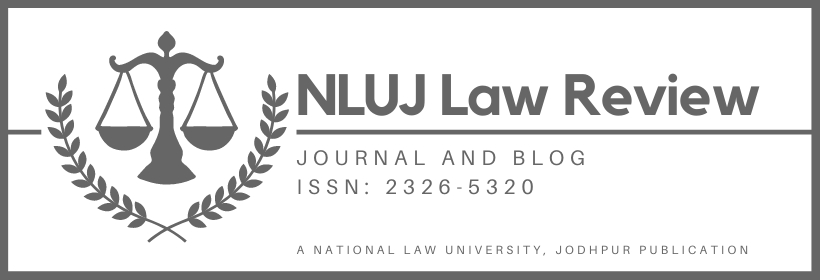Over the years, a lot of deliberation has been put into prescribing a standard for defining the term ‘fake news’. While some scholars believe that the term simply insinuates the act of portraying misleading pieces of information as news, others feel that such a piece of information must be invariably conjoined by an intention to deceive others for it to be placed under the ever-evolving ambit of fake news. This blog argues against the incorporation of an overarching pre-requisite of ‘intention’ for including a particular piece of information within the murky contours of fake news. Since it is easy to mislead the public by moulding the facts to make them favour a specific narrative; an attempt towards detecting the authenticity of the facts ultimately boils down to whether the material assertions in the piece are objectively false.
The advent of social media platforms and the surge in the circulation of fake news: Do social media platforms end up shielding the accused?
The world had already been a witness to several instances of spread of misinformation in the past, with the deception of and the misinformation about the Trojan Horse being one profound example of such an instance. However, the advent of digital platforms fostered the circulation of fake news; since the former were modelled around allowing a large-scale sharing of information, the content of which was seldom regulated.
The potential of social media platforms to completely sway the opinion of the masses was brought to the forefront during the 2016 U.S. Presidential elections. The dissemination of fake allegations against Hillary Clinton under the directive of a wider Russian fake-news-campaign, and the fabricated narrative of Pope Francis endorsing Trump as the Presidential candidate, were regarded to have contributed to the latter’s victory. Such a vilification of the opposite candidate/party to an extent where internet trolls are paid to spread bogus content, is blatantly antithetical to the moral fabric of any democracy. Moreover, fake news’ influence on elections is just one tenet of its several other possible ramifications on the society, as a whole.
Statistics revealed that around 160 million Indians are part of the social media giant WhatsApp’s customer base, which has also been stated as the most potent platform for the circulation of misinformation in India. The country has been a silent victim of the turmoil caused by the circulation of such bogus content – from the dissemination of claims revolving around the inclusion of GPS-chips in the new currency notes, the propaganda around questioning the Congress for having a soft stance against militancy in Kashmir, to the current havoc caused by the pieces revolving around the spread of the novel coronavirus (“2019-nCoV”). Perhaps unsurprisingly, the evil of fake news has been touted by some commentators as a “public health crisis” in India and any attempt to ameliorate the current state of affairs must scrutinize the current legal framework against the spread of such news.
Countering fake news: the narrative of the Indian jurisprudence
A) An Account of the current Legal Framework
Despite the nationwide dissemination of fake news on the internet, the Indian legal regime does not have a dedicated legislation targeted towards curbing this menace. In any case, the Information Technology Act, 2000 (“IT Act”) governs the realm of cyber law in India. In a 2015 judgment of the Supreme Court (“SC”), §66A of the IT Act was struck down for being arbitrary and disproportionately invading the right to free speech. Surprisingly, while the judgment was heralded for upholding the sanctity of free speech, §66A could have nevertheless been employed to tackle the spread of fake news on the internet. In any case, the Indian regime currently relies on §66D, §67 and §69 of the IT Act, §295A (penalises acts intended to outrage religious beliefs), §500 (defamation) and §505 (criminalises statements conducing to public mischief) of the Indian Penal Code, 1860 (“IPC”) as well as §54 of the Disaster Management Act, 1954 (“DMA”) which was recently employed to tackle the dissemination of fake news related to the 2019-nCoV pandemic.
B) The Frailties of the current legal framework: A critical appraisal
In the absence of a dedicated legislation tackling fake news online, social media intermediaries often resort to the safeguard enshrined under §79 of the IT Act to absolve themselves of any liability. Under this provision, the social media intermediaries would not be held liable if they were not responsible for the inception/transmission and reception of the impugned content through their networks. While this provisions was formulated to prevent the stifling of free speech via an unregulated State-led censorship of online content, intermediaries have now resorted to the same provision to justify their inaction vis-à-vis the deluge of misinformation that is transmitted through their networks.
Moreover, the spread of bogus information in itself, represents a gross abuse of the freedom of speech, since the same erodes people’s trust in the democratic process by impacting their decision-making. In addition, the aforementioned provisions were promulgated to foster an uninhibited technological advancement of online intermediaries,[i] at a time when their influence on the wider democratic regime was nascent, at best. However, most social media platforms are currently already well-equipped to shape public discourse owing to their dominant share in the telecommunications regime;[ii] thus, their immunity under §79 should be very limited.
Another anomaly in the current framework lies in the incorporation of criminal standards of culpability to deal with cases of circulation of bogus information. The provisions of IPC are more suited towards information dealing with hate speech and defamation, which ispo facto excludes a fair share of cases from its ambit. Previously, India also resorted to internet shutdowns as a method to tackle the spread of fake news, however according to the author, this method is inefficient to address the issue of fake news on two grounds. Firstly, it is sanctioned under §144 of the Criminal Procedure Code which makes it permissible only when a ‘speedy remedy’ is required, making it inefficient to tackle the spread of fake news at an early stage. Note that §144(1) is only applicable when the Magistrate deems it necessary so as to prevent the possibility of an injury being caused to a person.
Secondly, the operative words used in the provision such as ‘disturbance to public tranquillity’ have not been defined in the Code, rendering the provision susceptible to being abused for stifling speech. Although the Hon’ble Supreme Court has attempted to delimit the contours of the phrase in some cases, such as in re Madhu Limaye;[iii] there have still been instances where the authorities have allegedly misused the provision by obviating the need to satisfy its prerequisites before imposing widespread internet shutdowns. Thus, the absence of a codified standard has nevertheless left the provision susceptible to being abused.
C) Recommendations to ameliorate the current stance of the framework.
Several government agencies in the past have partnered with the intermediaries such as Facebook and Instagram to flag/fact-check, and even remove false and/or outdated information, without unjustly censoring the data posted online. In addition, while Twitter has vowed to enhance the efficiency of its algorithmic tools to curb disinformation and update its community guidelines, Facebook has already updated its policy language which seeks to proscribe advertisements from websites hosting misleading content.
As evidenced earlier, the Indian jurisprudence has a very limited arsenal of laws that are targeted towards controlling the vertiginous spread of fake news. Its legislative framework is primarily dependent upon §505(1)(b) of the IPC and §54 of the DMA, which has been in the headlines in the midst of the 2019-nCoV outbreak. Considering the ramifications associated with the widespread dissemination of unverified pieces of information on the internet, it is indeed surprising that the Indian cyber regime still does not have a dedicated provision to govern the spread of rumours on the web. On similar lines, the Law Commission of India in its 267th Report had recommended to add §153C and §505A to the IPC in order to prohibit the dissemination of inciteful speech on the internet. Even the Department of Promotion of Industry and Internal Trade had released a Draft National E-Commerce Policy, holding the intermediaries responsible for the genuineness of the content posted on their websites.
Since all such measures have egregiously failed to tackle the spread of fake news, this section aims to elucidate a few non-legislative measures which may be undertaken by the Indian framework to ameliorate their current stance vis-à-vis combating fake news. Firstly, the Indian regime may take interpretative cues from the cyber regimes of Malaysia and Qatar, since both these jurisdictions have already launched information-verification-websites, i.e. ‘sebenarnya’ and ‘lift the blockade’ to fight the disinformation campaigns. Secondly, the inclusion of media literacy within the nation’s legal curriculum, as seen in Canada and Taiwan, may also help it to efficiently overhaul its cybersecurity laws. Additionally, many other nations have also funded research projects employing artificial intelligence (“AI”) and machine learning to detect questionable content. For instance, the U.S.A. has backed ‘ClaimBuster’ which employs national language processing techniques to spot factual inconsistencies. The AI Foundation has also developed a software named ‘Reality Defender’ which aids in the early detection of fake news. Furthermore, some major intermediaries such as Facebook and Google have also formed an Information Trust Alliance to effectively weed out fake content.
Conclusion
The blog aimed towards addressing the shortfalls of our current legal framework when it comes to tackling the vertiginous advances in the circulation of fake news online. It is disheartening that social media platforms have gone from being sophisticated platforms for public discourse and civic engagement, to being silent intermediaries to the transmission of misinformation on the internet. By recommending some measures to mitigate the rigours associated with the widespread circulation of fake news, this blog argues that the social media intermediaries must address the moral obligations which come as a part and parcel of their massive global influence. While it is imperative for these platforms to maintain their neutrality, they also have a corresponding obligation to uphold a pluralistic climate of opinion wherein, the public consensus is negotiated based on a legitimate factual matrix.
[i] Zeran v. AOL, Inc., 129 F.3d 327, 330 (4th Cit. 1997)
[ii] Fair Hous. Council of San Femando Valley v. Roommates.com, LLC, 521 F.3d 1157, 1164 n.15 (9th Cir. 2008)
[iii] Madhu Limaye v. Sub-Divisional Magistrate, Monghyr & Ors., 1971 AIR 2486.
This article has been authored by Prateek Joinwal, a student at West Bengal National University of Juridical Sciences.



